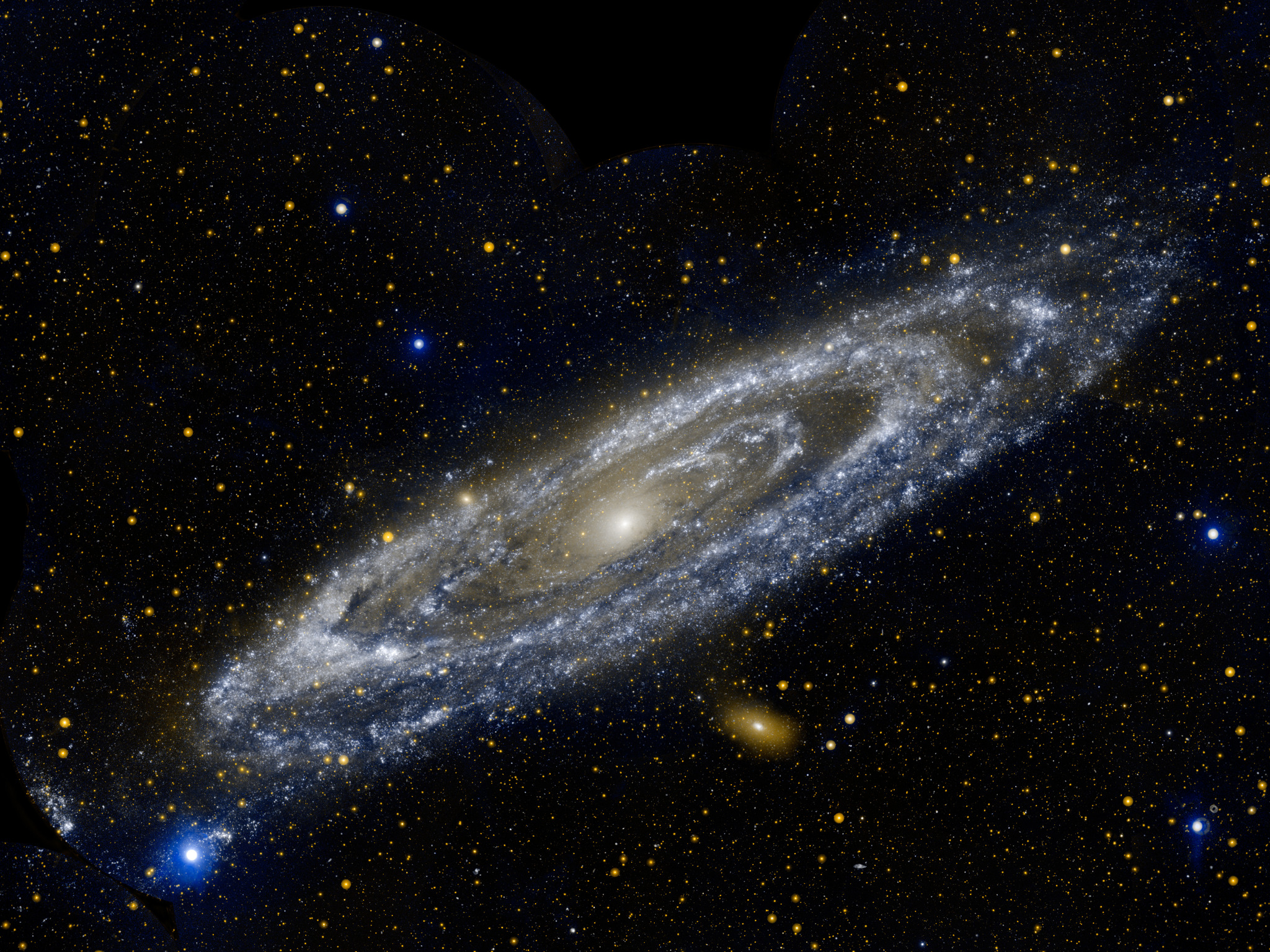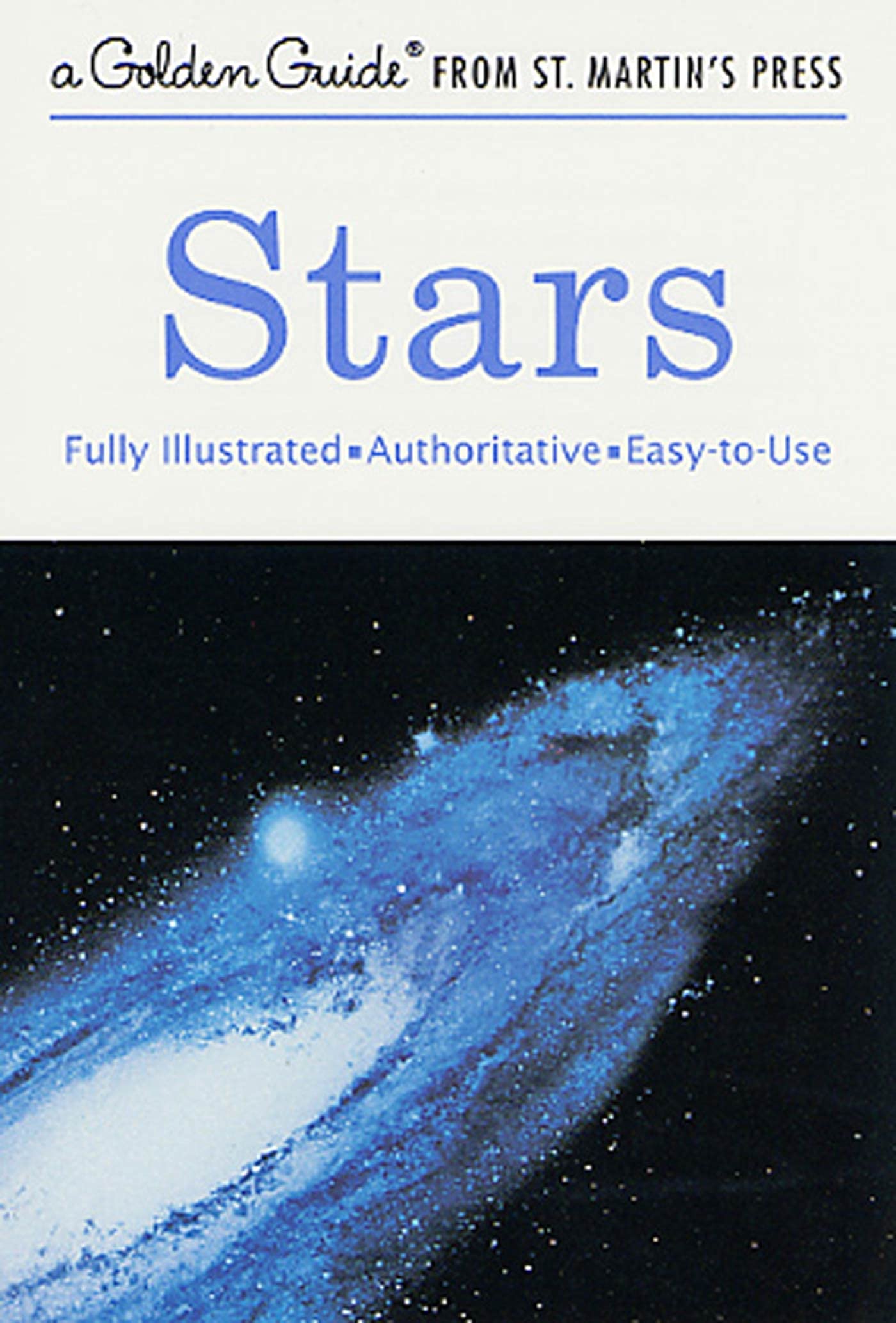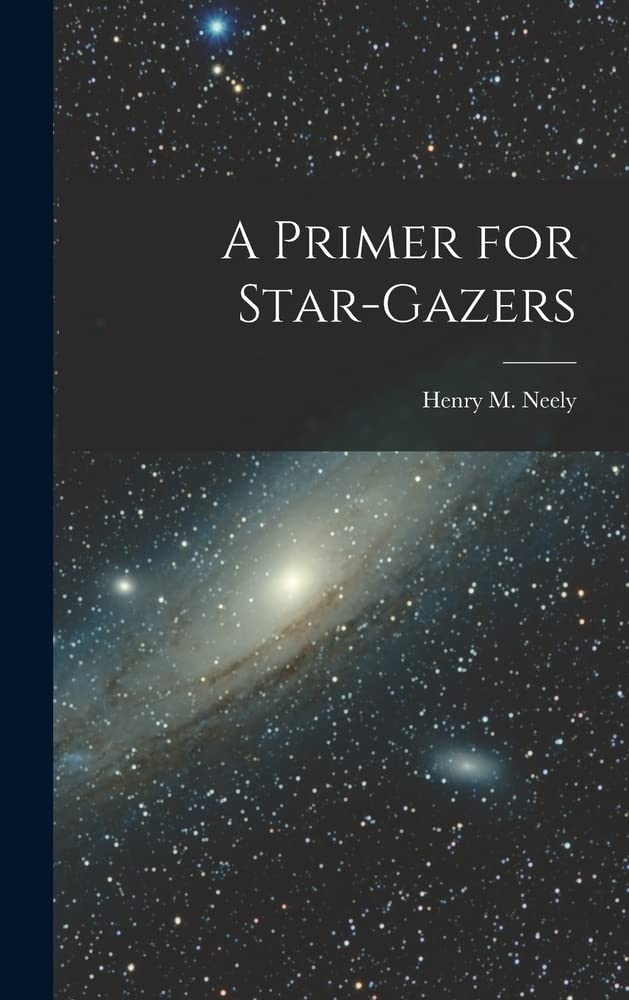Book reviews for three guides to the stars and constellations

Over the years, many have asked me to recommend books to help them in their study of the stars and constellations.
In this column, I'll provide reviews of three books that I consulted during my formative years in the hobby.
All three proved most valuable to me for my then-burgeoning interest in astronomy and I'm sure the same would hold true for most anyone who will take the time to use them today.
1. "Stars" by Herbert S. Zim and Robert H. Baker
A Golden Guide from St. Martin's Press, 2001
160 pages
This was my very first astronomy book, which I received at the age of 8, and is in my opinion still among the very best as an introduction to not only the stars and constellations, but astronomy as well. "Stars," first published in 1951, is one of a series of pocket Golden Guides on nature and physical science, which has been updated over the years, most recently in 2001.
The book was written by naturalist Herbert S. Zim (1909-1994) and astronomer Robert H. Baker (1883-1964). The latter was once head of the University of Illinois Department of Astronomy and was also the author of what is still considered a classic among college textbooks on astronomy ("Introduction to Astronomy," Van Nostrand publishers). Baker also authored two other excellent books, "When the Stars Come Out" and "Introducing the Constellations," both published by Viking Press.
Augmenting the text by Zim and Baker are 150 beautiful color paintings rendered by James Gordon Irving (1913-2012), whose paintings were exhibited at the American Museum of Natural History and the National Audubon Society in New York City.
Breaking space news, the latest updates on rocket launches, skywatching events and more!
This book was an immense help to me in identifying the brightest stars and constellations at a very young age. There are 23 maps that show constellations as lines connecting the principal naked-eye stars, traced within pictorial images of what each star pattern supposedly represented.
Additional charts and diagrams help, although the four seasonal star maps which are used to locate these stars are a bit confusing.
Nonetheless, the book contains a lot of valuable information and observing tips regarding the sun, moon, planets and stars, as well explanations for unusual atmospheric phenomena such as the sun's red color at sunrise and sunset, rainbows, lunar and solar haloes as well as the aurora borealis or northern lights.
If you're just starting out with astronomy as a hobby, this little handbook is perfect for anyone who wants to enjoy the wonders of the night sky. Written in easy-to-read language, it is ideal for use at home, as well as to take along on a vacation or a camping trip.
2. "The Stars: A New Way to See Them" by H.A. Rey
Houghton Mifflin Company, Boston, 2008
160 pages
As I noted for the Golden Guide's "Stars," there were pictorial images of the person, creature or object that a constellation represented. But 70 years ago, Hans Augusto Rey (1898-1977) devised a different methodology of identifying the constellations using his own stick-figure star patterns and introducing them in "The Stars: A New Way to See Them," a guidebook published in 1952 and revised several times ever since. Indeed, this book has been extremely popular, going through a number of printings and selling hundreds of thousands of copies. Many people swear by Rey's patterns, claiming they are easier to learn and see in the sky.
I first came across a copy of Rey's book when I was 10 years old and was immediately intrigued by a number of his clever creations, such as the Gemini twins holding hands (most often used in advertising the book).
There are, however, many legends and mythological stories that date back thousands of years explaining the creation of the constellations. But for his book, Rey for the most part has ignored these ancient legends and performed radical surgery on virtually all of the constellations, seemingly to conform solely to his ideas as to what a particular star picture should look like.
It makes one wonder who had the more fertile imagination: those cultures who actually invented the constellations all those many centuries ago, or Rey himself?
Some examples:
For Ursa Major, Rey made the end of the Big Dipper's handle — long regarded in mythology as the tail of the Great Bear — into its nose!
In the case of Cetus, the whale, he turned that mammal's tail into its face, even though the star Deneb Kaitos is located there; Arabic for the southern tail of Cetus.
Hercules has always been considered a kneeling giant with its brightest star, Rasalgethi marking "the head of the kneeler." But Rey turns Hercules into a man wielding a club with Rasalgethi marking his left foot.
As for Virgo, her brightest star, Spica, is supposed to mark a spike of wheat held in her hand. But according to Rey, Spica is the Virgin's "brightest jewel," positioned he writes, "on an unusual spot" (her derrière).
And then in those cases where some constellations came reasonably close to depicting what they represented, Rey could not leave well enough alone. In some cases, like with Pegasus, the flying horse and Taurus, the bull, his stick-figure renditions were decidedly forced and not really all that obvious, looking more like abstract art — something resembling sketches by Pablo Picasso.
Despite these drawbacks, I still very much like "The Stars: A New Way to See Them" as an easy-to-comprehend work that, among other things, explains to the novice how not mistake a planet for a star and cites the reasons for planetary movements. The speed of light and light-years are explained on a totally non-technical level, and overall, this book does an admirable job in explaining some of the complicated concepts about the night sky and what it contains.
And I would even regard Rey's abstract patterns as a challenge to those who wish to hone their star-finding skills.
3. "A Primer for Star-Gazers" by Henry M. Neely
Harper and Row, New York, 1970
334 pages
From time to time, I have mentioned Henry M. Neely (1877-1963) who, after a distinguished career in radio, took up astronomy relatively late in life. He was a longtime lecturer at New York's Hayden Planetarium and became one of the nation's leading popularizers of astronomy. Sadly, he died before I had a chance to hear any of his lectures, but Neely wanted everyone to share in the beauty and splendor of the heavens. His 1946 book "A Primer for Star-Gazers" was last updated in 1970 and remains a powerful yet simple tool in the study of the stars and constellations.
Unfortunately, revised distances for many stellar and deep-sky objects dating back to the book's first edition were never updated. Thus, on page 195, the Andromeda galaxy is listed as being 750,000 light-years away, whereas current figures are more than three times as great. But the author's aim in this book is to help you find the stars, not to fill you with facts and figures. Neely visualized his reader as wanting simply to recognize the principal stars and constellations without making a real study of astronomy.
"A Primer" follows this philosophy from cover to cover. It contains 96 sky maps all drawn by Neely, with all navigational stars indicated as such, and with a unique calendar that tells which maps to use for prominent objects. This book proves itself to be an elaborate yet easy-to-use star finder. Follow the instructions in Chapter 5 ("How to Use This Book"), then go outside, select the proper map for the evening, rotate the book as directed, look at the page, then at the sky, and there should be the desired constellation. Phonetic spellings of star and constellation names are given next to the regular spellings. The Big and Little Dippers and Cassiopeia's "W" are chosen as the first groups to recognize, for later use in locating others. The book provides excellent descriptions of how to find each constellation and notable objects within it.
Neely had a predilection for turning some classical star patterns into geometric shapes. Thus, we are introduced to "The Kite in Auriga," "The Long Wedge of Gemini," "The Great Virgo Triangle," and depicting Hercules as yet another kite ... but also with a tail.
He may well have been the very first to turn Sagittarius from an archer into a teapot (Chapter XXIV) and on page 187, he incorporated the stars of Cygnus, Lyra and Aquila into a baseball game in the sky. Deneb was home plate; Epsilon Cygni, first base; Eta, second base; Delta, third base; and Sadr, the pitcher's mound. Left fielder Vega and center fielder Albireo are running to catch a fly ball in left-center field, while Altair, the right fielder, watches. Such imaginative variants of constellations are quite effective in teaching the sky, especially to youngsters.
The only negative for this book that I would register is in Chapter 16, where Neely turns the constellations of Andromeda, Perseus, Aries and Triangulum into his own creation: The Yacht.
I must tell you that in all my years of skywatching, I have never been able to visualize it, even though Neely claims that, "... it does not require nearly as great a stretch of the imagination as many of the traditional figures allegedly seen by ancient stargazers."
With all due respect to Neely, I disagree!
Like some of Rey's creations, The Yacht is a highly abstract star pattern. Good luck with it!
Overall, however, this fine book should make the task of a beginner to locate all the stars and constellations noted in this text quite easy and, as Henry Neely himself would like it to be, most enjoyable.
Joe Rao serves as an instructor and guest lecturer at New York's Hayden Planetarium. He writes about astronomy for Natural History magazine, the Farmers' Almanac and other publications. Follow us on Twitter @Spacedotcom and on Facebook.

Joe Rao is Space.com's skywatching columnist, as well as a veteran meteorologist and eclipse chaser who also serves as an instructor and guest lecturer at New York's Hayden Planetarium. He writes about astronomy for Natural History magazine, Sky & Telescope and other publications. Joe is an 8-time Emmy-nominated meteorologist who served the Putnam Valley region of New York for over 21 years. You can find him on Twitter and YouTube tracking lunar and solar eclipses, meteor showers and more. To find out Joe's latest project, visit him on Twitter.



